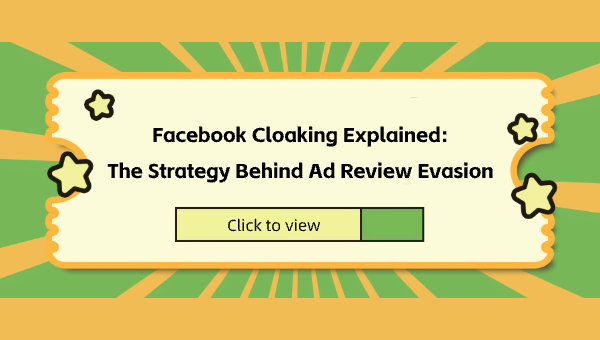Facebook Cloaking Explained: The Strategy Behind Ad Review Evasion
As Facebook continues to strengthen its ad policies and detection algorithms, cloaking has emerged as a controversial yet widely adopted strategy in certain niches. This article dives into the mechanics of Facebook cloaking, its most common methods, and how to approach it from a risk-managed, informed perspective.

What Is Facebook Cloaking?
Cloaking is the act of showing different content to Facebook reviewers and real users. While reviewers are presented with a clean, policy-compliant landing page, actual users are redirected to a different version — often one that's more aggressive or conversion-focused.
Common Cloaking Techniques on Facebook
IP Filtering: Blocking Facebook data center IP ranges.
User-Agent Detection: Differentiating between bots and human users.
Referer Tracking: Determining if the traffic source is Facebook.
Time-Delay Redirects: Showing a compliant page for a few seconds before redirecting.
Why Marketers Use Cloaking
Circumvent ad restrictions for niches like weight loss, finance, adult content, or gambling.
Extend the lifetime of ad accounts.
Test high-converting pages without triggering instant bans.
The Risks of Cloaking
Despite its potential for ROI, cloaking carries severe risks:
Permanent ad account bans;
Domain blacklisting;
Legal exposure in some jurisdictions.
Platforms like Facebook continuously update their detection algorithms, making cloaking increasingly difficult to maintain.
Best Practices for Responsible Marketers
Use legitimate A/B testing tools for creative variation.
Build segmented traffic flows with WAF/CDN rather than cloaking bots.
Partner with experts who offer rule-based segmentation, not blackhat cloaking.
Conclusion:
Facebook cloaking is not a beginner-friendly tactic, nor is it suitable for long-term brand building. But understanding how it works is essential for performance marketers navigating competitive or regulated spaces. For advanced, controllable traffic segmentation tools, visit adcloaking.com and explore our real-time cloaking solutions.
